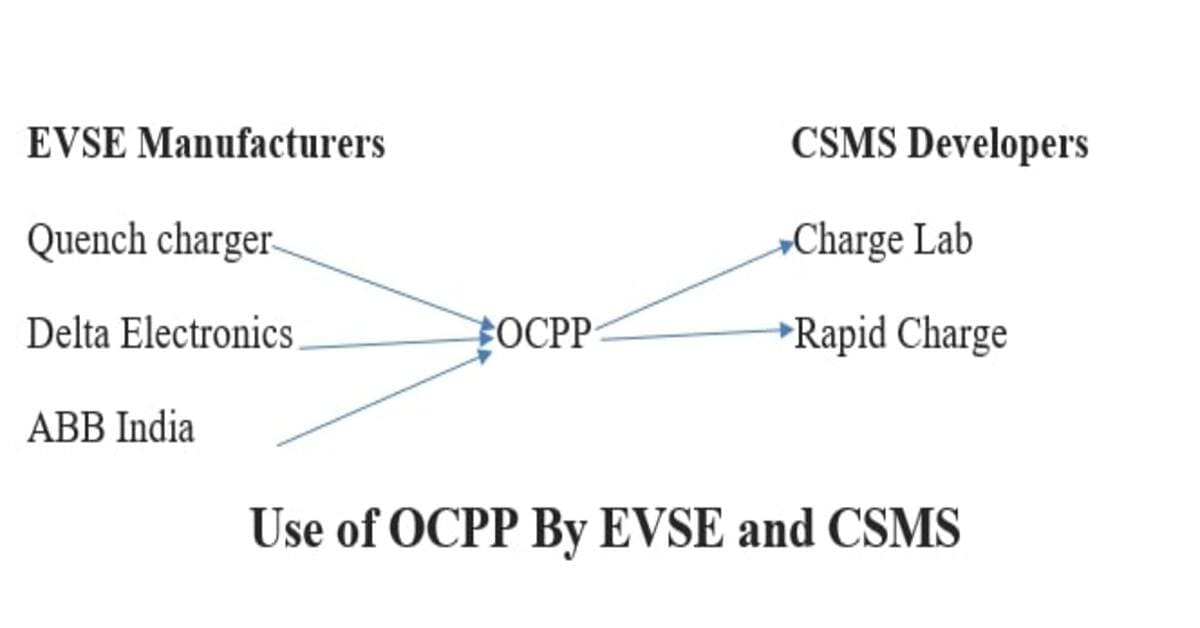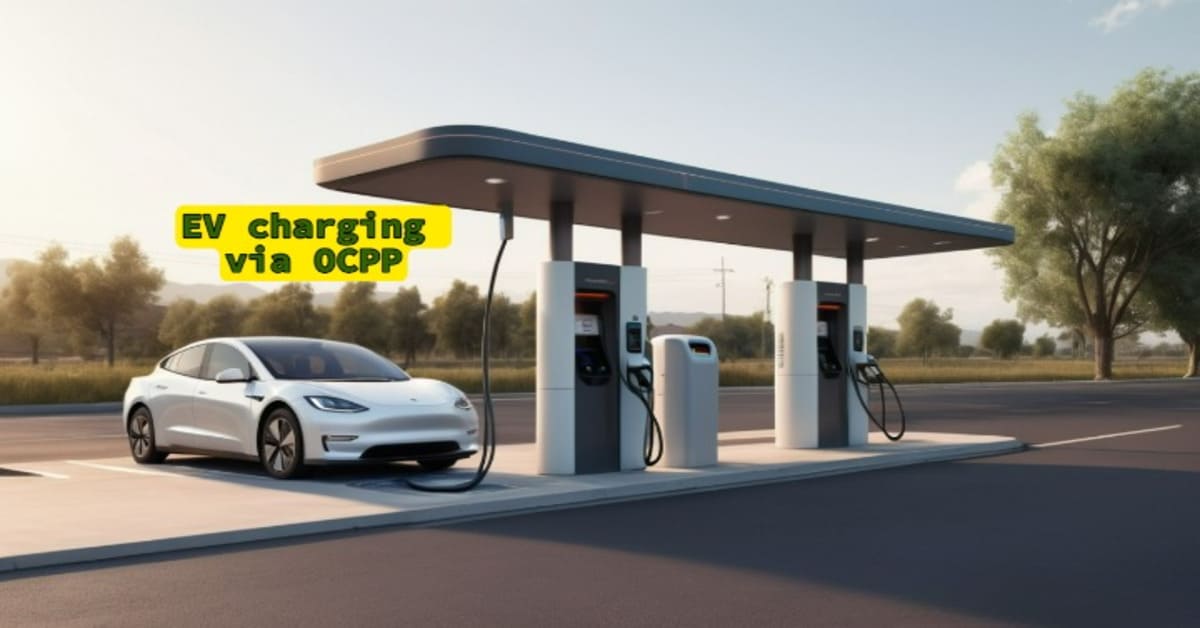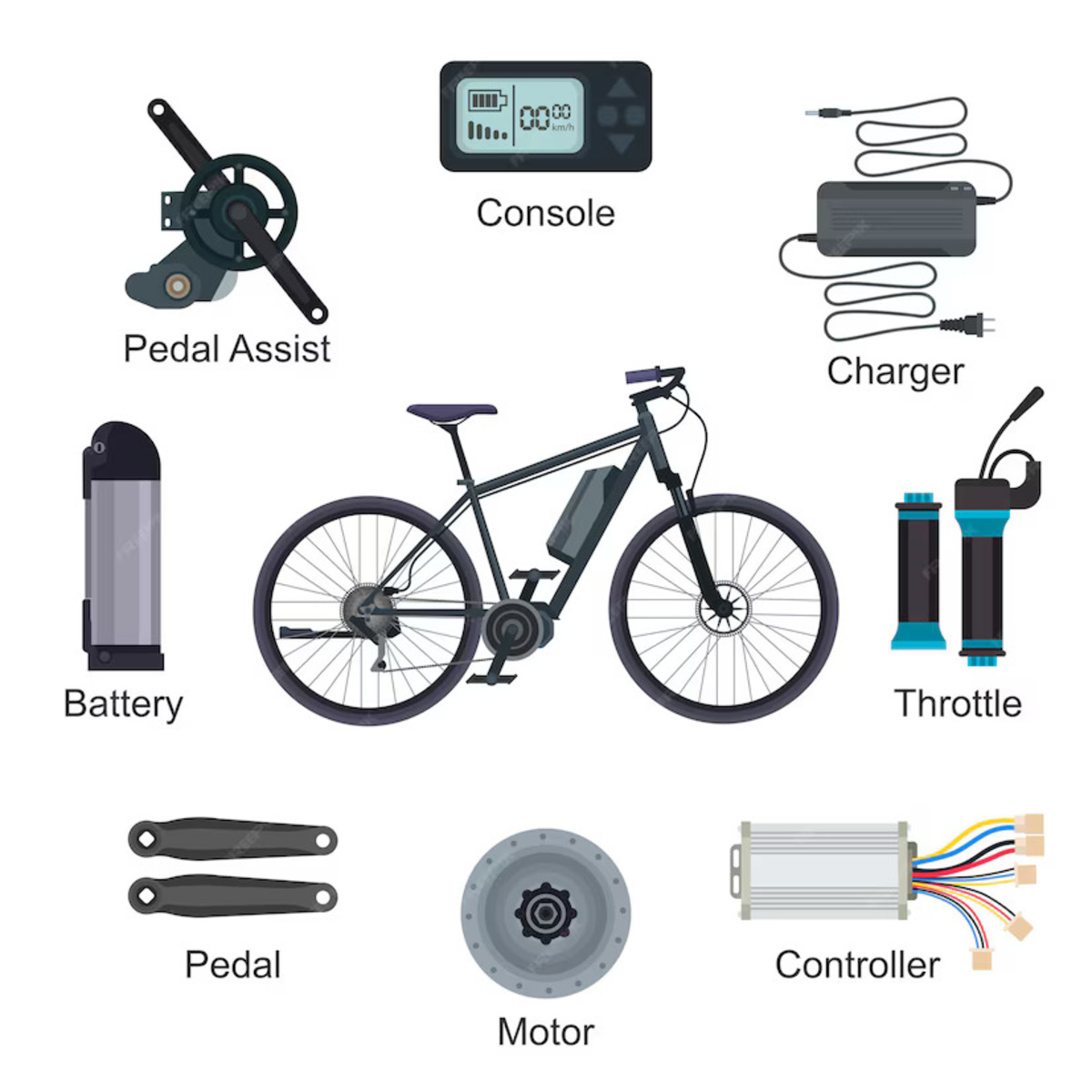This article will gain you the deep insights of understanding OCPP protocol. Open Charge Point Protocol (OCPP) is a set of rules that are used to communicate and exchange data between several entities in the electric vehicle industry.
With their numerous benefits, electric vehicles have some challenges too. One of the main challenges is how to charge the electric vehicle, as it has several charging protocols such as OCPP (Open Charge Point Protocol), OCPI (Open Charge Point Interface), and OSCP (Online Smart Charging Protocol).These tools are used to ensure widespread interoperability, increase EV adoption, and develop expansive future infrastructure. Although every protocol has its own features, today we will discuss OCPP.
What is OCPP and Understanding OCPP Protocol?
Open Charge Point Protocol is a communication protocol between Electric Vehicle Supply Equipment (EVSE, also known as EV charging stations or EV charging points) and Charging Station Management System (CSMS, also known as charging management software or central system), a back-end system that allows the charging point operators to control and manage all the chargers from a single point and provide facilities like creating reports and managing the chargers. This communication helps us to know its smart function, and it gives certainty about authentic and easy EV charging. Because of the growing popularity of electric vehicles, several chargers are being installed.

Chargers and CSMS should be OCPP-compliant so that CSMS developed by any company can communicate with EVSE and vice versa. CSMS is the brain of charging stations.
CSMS has complete knowledge of all the charging stations, and it checks and monitors whether the charger is working properly or not. If any charger is overloaded because of charging more vehicles, it automatically shuts down that charging station. It also checks how much electricity is sold and what payment is received from the people. It even knows which charging station is free and which one is occupied. It provides all this information to electric vehicle supply equipment (EVSE), and that information gets displayed on the board and can be checked by us. In India, Charge Lab and Statiq are the prominent CSMS developers.

Why is OCPP Important?
Open Charge Point Protocol controls the charging patterns and energy consumption. By enabling the supply of energy, it permits priority charging for selected vehicles. It is compliance with the electricity grid and supports peak demand.
Different Versions of OCPP
The first version of the Open Charge Point Protocol protocol, i.e., OCPP 1.0, came into existence in 2009 but was released in 2010. Its main purpose was to provide basic communication between the EV charging management system and EV charging stations. In 2012, OCPP1.2 was released, and in 2013, the Open Charge Alliance (OCA) was founded. OCPP is maintained by the OCA, a worldwide group of EV manufacturers that sets the standard in EV charging infrastructure. It is a free and easy-to-implement protocol, and its aim is to stimulate the adoption of the OCPP communication protocol.
Gradually, OCPP has come up with new releases, such as OCPP 1.5 (2015), OCPP 2.0 (2018), and OCPP 2.0.1 (2020). OCPP 2.0.1 is an advanced version, and its main purpose is to resolve the error and provide more security. OCPP is widely recognized for its communication between EV charging stations and the EV management system. OCPP is in compliance with ISO 15118 and adds new features such as plug & charge and smart charging.
Role of the Open Charge Point Protocol
The Open Charge Point Protocol has two roles:
- Charge Point (or the client): It is a physical charging station where you charge your electric vehicle. It can have one or more connectors. It is helpful in providing all the information about the availability and status of charging stations.
- Central System (or the server): The backend management system or server communicates with the charge point or the client using OCPP to monitor the charging session and collect information.
What is the Function of OCPP in EV charging
Below points will provide you an understanding of function of OCPP in EV charging
- Requirement Of Pre-Authorization
- Provide Information To The Backend System
- Helpful In Making Reservations
- Transform The Data
- Check The Status Of Charging Stations
- Control The Charging Session
- Helps In Finding Charging Points
- Fix The Error
Now briefly discuss above points:
1. Requirement Of Pre-Authorization:
You do not need to know about Open Charge Point Protocol for basic charger installation, as the software is pre-configured and gives us all the information that is needed to run a small charging installation. For starting the charging operation, pre-authorization is needed so that the user will start the charging service.
2. Provide Information To The Backend System:
To collect billing and other information, it helps in providing the charging session details to the backend system.
3. Helpful In Making Reservations:
OCCP helps in finding the charging stations and making reservations.
4. Transform The Data:
OCCP helps in transferring the important data to the charging station management system from the charging session.
5. Check The Status Of Charging Stations:
The real-time status of charging stations can be seen with the help of Open Charge Point Protocol , such as which charging stations are currently busy or idle.
6. Control The Charging Session:
Open Charge Point Protocol is useful in controlling the charging session remotely, such as the charging status at the beginning and end. It collects information about the performance of the charger.
7. Helps In Finding Charging Points:
It helps in locating the new charging points.
8. Fix The Error:
It is helpful in fixing the error that has been recorded by electric vehicle supply equipment (EVSE).
Significance of OCPP in Smart Charging
Open Charge Point Protocol (version 1.6 onwards) helps in providing simultaneous charging with the help of CSMS (charging station management system). By scheduling EV charging simultaneously, we can increase the use of the sanctioned electricity from the grid in a maximized way. Smart charging helps enhance grid stability.
Open Charge Point Protocol helps in smart charging of the vehicles by controlling the power, and it provides power to multiple vehicles when they are plugged in at the same time. It can be done by putting limits on charging stations for supplying power.
OCPP Role in Permitting Interoperability Between Different Charging Networks
Like Open Charge Point Protocol , there are other communication protocols, such as Open Charge Point Interface (OCPI) or OICP (Open Inter-Charge Protocol), that are required to communicate between different charging networks. Any app can connect to CSMS, and for this, you need to use the common interface, that is OCPI. Now, if you have one subscription and you want to use another charging network, you can use that, and that concept is called EV roaming. OCPI is a significant protocol for EV roaming. It is also an open protocol that provides connections between charging station operators and service providers.
Advantages of the Open Charge Point Protocol (OCPP)
Given below are the numerous advantages of Open Charge Point Protocol
- Convenient Integration
- Diminish Cost
- Reliability Highly Scalable
- Freedom and Flexibility
- Helpful To Access Billing And Other Functions
- Helps In Locating Charging Systems
- Easy Payment
- Interoperability
- Supports Multiple Communication Protocols
- User Authentication
Please find the details of the above list of advantages of OCPP
1. Convenient Integration:
Open Charge Point Protocol can be conveniently deployed in existing applications, such as charging station networks. No additional investment is required to make significant changes. It is designed in such a way that it can be easily integrated with existing systems.
2. Diminish Cost:
Open Charge Point Protocol is an open-source standard protocol. It helps operators save money by reducing the effort of manual maintenance. With the help of OCPP, operators can gather information on the usage patterns of charging sessions.
3. Reliability Highly Scalable:
Open Charge Point Protocol is a reliable communication channel, that is why the data that OCPP shares between charging stations and energy providers increases security. All sensitive data is encoded using protocols that protect the data from cyberattacks. OCPP is highly scalable as it can be used from a single-point system to several charging stations. It is suitable for many stations. Operators can easily mix and match the different charging equipment with different charging stations without facing any compatibility issues.
4. Freedom and Flexibility:
Open Charge Point Protocol plays a crucial role in adding and removing charging points from the charging network. This flexibility helps to adjust easily to new technologies such as V2G or power to X.
Open Charge Point Protocol is very flexible to customize the solutions of the developers. Charger and CSMS should be OCPP-compliant so that they can connect with everyone and talk in common language. An electric vehicle manufacturer can sell his EVSE to everyone if it is OCPP-compliant. CSMS also has the flexibility to sell their software to anyone if it is OCPP-compliant.
5. Helpful To Access Billing And Other Functions:
Open Charge Point Protocol is highly helpful to allow the management to access billing and other functions that are related to the functionality of charging station. It is a universal and interoperable protocol and can be used for both AC and DC charging stations.
6. Helps In Locating Charging Systems:
Open Charge Point Protocol is a standard protocol that communicates between charging stations and charging station management systems. Suppose you went on a trip, and in the middle of the way, you realize that your car’s battery is about to die. You did not find the nearest charging station. Through the mobile app, you can search for charging systems. The EMSP (Electric Mobility Service Provider) app contacts EVSE (charger) through CSMS. To locate the charging station, our app contacts CSMS (not EVSE), searches the complete network, and lets you know about the best and free charger that is suitable for you. You can book your slot with the app.
7. Easy Payment:
Open Charge Point Protocol helps operators manage the accounts of customers by offering billing and a range of payment options. Once you have scheduled your charging slot with the help of the mobile app, by scanning the QRcode, payment can be done easily, and then an automatic invoice is also generated.
8. Interoperability:
OCPP is an open architecture and can be implemented easily. It encourages interoperability and helps developers solve problems. A variety of vendors support OCPP.
9. Supports Multiple Communication Protocols:
Open Charge Point Protocol supports several communication protocols such as REST (Representational State Transfer), SOAP (Simple Object Access Protocol), and SMPP (Short Message Peer to Peer). Multiple communication methods make it convenient to combine with existing infrastructure. OCPP plays an important role in participating in multiple communications, and it helps operators improve pricing and tariffs. OCPP is compatible with a large number of devices and makes it easier to integrate with other systems.
10. User Authentication:
Open Charge Point Protocol is designed in such a way that it focuses on user authentication and encryption. OCPP ensures that whatever communication occurs, it is safe and secure.
Conclusion
Open Charge Point Protocol is a protocol that continues to improve over time. It provides robust security features. The role of OCPP is to control, monitor, and remotely manage the EV charging stations. The purpose of OCPP is to make any charging station compatible with charging management software. OCPP protects your data against any unauthorized access to it. It makes sure that the EV charging infrastructure is always compatible with new technology.




